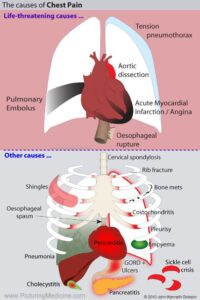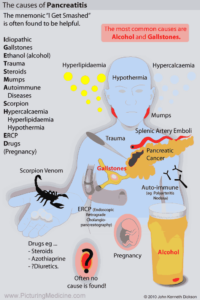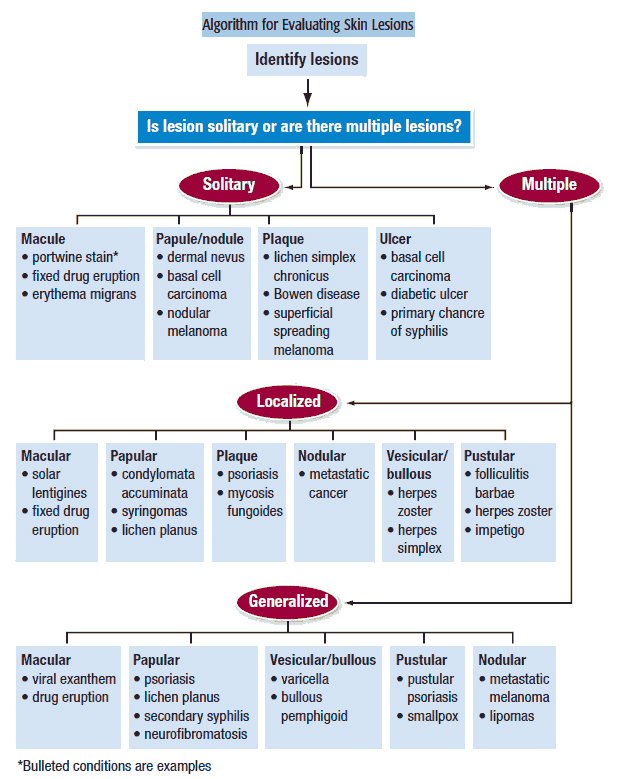Major depressive disorder (MDD) affects a significant number of patients worldwide, impacting both mental and physical well-being. As medical professionals, recognizing its prevalence and burden is essential.
This article reviews diagnostic nuances, key clinical features, differential diagnosis, and the evolving role of advanced providers in managing MDD.
Epidemiology
According to the 2022 National Survey on Drug Use and Health, MDD remains among the most widespread mental health conditions in the US. Over 22 million adults, roughly 9% of the adult population, are affected. Alarmingly, 4.8 million adolescents aged 12 to 17 (about 1 in 5) also experience major depression.
These numbers highlight how MDD impacts individuals across all age groups, underscoring the urgent need for early recognition and accessible mental health care.
Clinical Significance
MDD contributes to disability, decreased quality of life, and higher morbidity. Untreated depression can worsen outcomes for chronic diseases like diabetes or heart failure.
Suicide remains a tragic outcome, making timely recognition and intervention critical. Emerging research highlights how early interventions can mitigate depression risk in youth.
For instance, a 2025 study published in PLOS Medicine found that app-based cognitive behavioral therapy (CBT) for insomnia helps improve sleep in youth. Likewise, it significantly reduces depressive symptoms and delays MDD onset over 12 months.
Common Misconceptions or Missed Diagnoses
Not all depressive presentations include low mood. Patients may present with somatic complaints such as pain or fatigue. Medical providers may overlook subthreshold symptoms that fall short of DSM-5 criteria, though these patients remain at risk.
Depression can also be masked by coexisting anxiety, substance use, or PTSD. Evaluating for overlapping conditions is essential to avoid misdiagnosis.
Clinical Presentation
Understanding how MDD manifests in various populations is essential for timely and accurate diagnosis. Below, we examine both textbook criteria and atypical presentations to help clinicians sharpen their clinical lens.
Core DSM‑5 Criteria
Diagnosing MDD requires at least five of nine symptoms over a minimum two-week period, including either depressed mood or anhedonia. Other features include sleep disturbances, appetite or weight changes, psychomotor changes, fatigue, worthlessness, impaired concentration, or suicidal ideation.
Atypical Presentations
In certain populations, like older adults or those in primary care, patients may primarily report sleep problems, low energy, or vague discomfort. In adolescents, other presentations may include excessive eating or hypersomnia. In perinatal women, irritability may be the predominant symptom.
Red Flags for Psychosis
Watch for expressions of hopelessness, changes in sleep or appetite, and withdrawal from activities. Psychotic symptoms, such as hallucinations or delusions, require prompt mental health care. The presence of self-harm thoughts must prompt immediate evaluation.
Diagnostic Approach
After clinical suspicion arises, a structured diagnostic process is critical to confirm MDD, rule out mimicking conditions, and evaluate for comorbidities. The following tools and differentials can guide a comprehensive evaluation.
Use of PHQ‑9 or HAM‑D
The PHQ‑9 is a brief, self-administered tool valuable in both primary and specialty practice. HAM‑D is more detailed and suited for psychiatric clinics. Use scores to screen and to monitor response over time. Once a positive screening is obtained, clinicians must differentiate between MDD and other possible causes of symptoms.
Differential Diagnoses
Before diagnosing MDD, rule out conditions like hypothyroidism, anemia, and vitamin deficiencies. Consider medication effects, substance withdrawal, or medical illnesses masquerading as depression (e.g., heart failure, chronic pain).
Medical Mimics and Comorbid Anxiety or PTSD
Secondary depression related to medical disease should be distinguished from MDD. Common co-occurrences like generalized anxiety, panic disorder, and PTSD can complicate presentation and treatment.
Treatment Strategies
Managing MDD effectively involves a blend of pharmacologic and non-pharmacologic approaches, guided by symptom severity, comorbidities, and patient preferences. The next sections review first-line options and monitoring considerations.
First‑Line Pharmacological Options
Selective serotonin reuptake inhibitors (SSRIs) such as sertraline and escitalopram are first-line, followed by SNRIs like venlafaxine. Bupropion and mirtazapine are alternatives, depending on side effect profiles and patient comorbidities.
Duration and Dosage Considerations
Prescribe at least 6–12 months after symptom remission for first-episode MDD. In recurrent or severe cases, longer treatment is justified. Dosing typically begins at the lower recommended range, titrating upward for efficacy and tolerability.
Monitoring Response and Managing Side Effects
Assess treatment response every 4–6 weeks using symptom scales. Monitor common side effects such as sexual dysfunction, gastrointestinal upset, weight changes, and sleep alterations. Adjust therapy based on efficacy and adverse effects. In expanding access, technology is playing a key role in mental health.
Research published in JMIR Publications suggests that telecare may enhance outcomes in underserved populations. A 2024 meta-analysis concluded that telecare interventions for older adults with MDD significantly reduced depressive and anxiety symptoms within three months.
The Role of Advanced Practice Providers in Mental Health
Advanced practice providers play a crucial role in managing major depressive disorder, especially in underserved areas. A DNP psychiatric nurse practitioner is uniquely trained to assess, diagnose, and treat mental health conditions using both pharmacological and psychotherapeutic approaches.
Their dual capability allows for more integrated, patient-centered care, improving continuity and outcomes across a wide range of clinical settings. In today’s complex mental health landscape, preparation for this role requires comprehensive training in both evidence-based therapy models and medication management.
These competencies are best developed through programs designed to blend theory, clinical immersion, and leadership training. According to Walsh University, DNP‑PMHNP equips providers to deliver holistic, evidence-based care to patients with complex psychiatric needs. The program covers pharmacologic management, behavioral therapies, and long-term patient engagement, skills that support collaborative care across settings.
Special Considerations
Some populations require tailored interventions due to age, comorbidities, or treatment resistance. Let’s explore what clinicians should know when treating these more complex presentations.
Treatment‑Resistant Depression
Defined as the lack of adequate response to two or more antidepressants. Options include augmentation with atypical antipsychotics, lithium, or comorbid therapy. Neuromodulation, like ECT or TMS, can be indicated in severe cases.
Adolescents, Older Adults, and Perinatal Patients
- Adolescents: Watch for irritability and academic decline. Fluoxetine is an FDA-approved option.
A 2025 Frontiers in Pharmacology review highlights the rising prevalence of adolescent depression and underscores the growing emphasis on early, integrated treatment strategies. It found that combining SSRIs with structured psychotherapies significantly improves long-term remission rates in teens compared to monotherapy. - Older Adults: Assess for drug-drug interactions and slow metabolism.
- Perinatal Patients: Balance maternal mental health with fetal risk. Although SSRIs are relatively low risk, they still require careful monitoring, especially in the perinatal population.
Collaborative Care Models in Primary vs. Psychiatric Settings
Collaborative care involves PCPs, mental health providers, and case management in a structured team. It improves access and outcomes, decreases wait times, especially in medically underserved regions.
Commonly Asked Questions
1. What are the common risk factors for developing MDD?
Several factors increase the likelihood of MDD. These include a family history of depression, significant life stressors or trauma, chronic medical illnesses, and lack of social support. Understanding these risks can help medical professionals identify vulnerable individuals and implement preventive strategies.
2. Besides medication, what other evidence-based treatments are effective for MDD?
Alongside pharmacological interventions, psychotherapy such as Cognitive Behavioral Therapy (CBT) and Interpersonal Therapy (IPT) is highly effective for MDD. Furthermore, lifestyle modifications, like regular exercise, a healthy diet, and consistent sleep hygiene, also play a crucial supportive role in recovery.
3. Is MDD the same as depression?
MDD is a specific type of depression. While people often use “depression” as a general term, MDD consists of a distinct set of criteria defined in the DSM-5. It is characterized by persistent low mood or loss of interest along with other symptoms lasting at least two weeks.
Major depressive disorder is more than a low mood. It is a multifaceted condition that requires careful assessment, collaborative management, and ongoing follow-up. By using validated screening tools, monitoring treatment effectively, and integrating care across disciplines, clinicians can improve both mental and physical health outcomes. Early recognition, accurate diagnosis, and teamwork remain essential.
This article is a guest contribution submitted by a professional healthcare writer and reviewed for accuracy.



